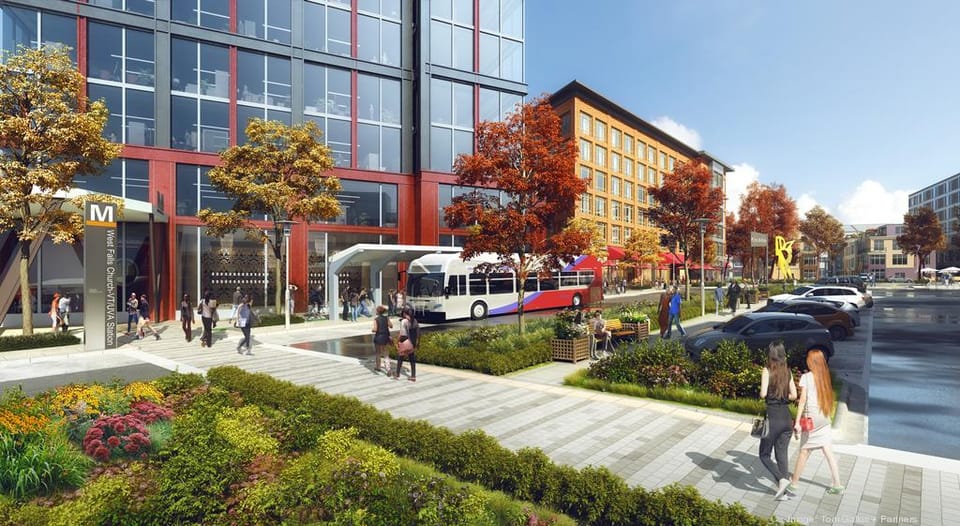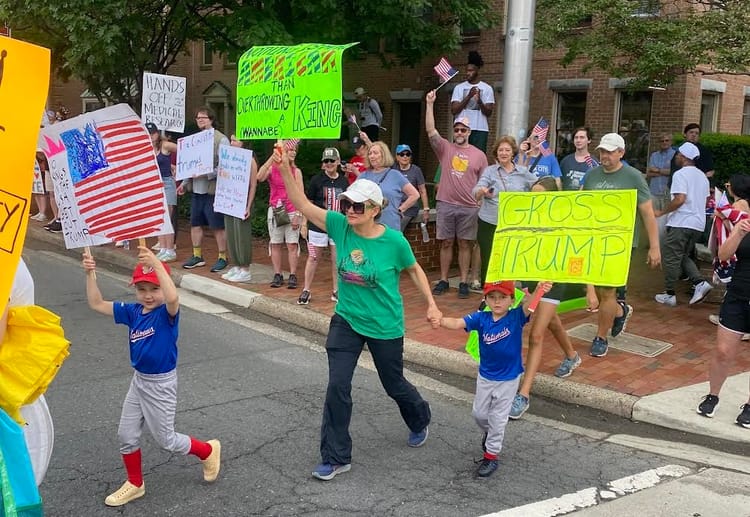Smart Cities Program Underway in City of Falls Church

The Smart Cities Program has launched in the City of Falls Church.
In collaboration with Virginia Tech’s Transportation Institute (VTTI) Division for Technology Implementation, Aug. 12 marked the City's official kick-off of the first phase of the Smart Cities Program, designed to “leverage advanced technologies to address the City's and community's transportation needs,” according to a City press release.
"This innovative technology will improve pedestrian safety, reduce conflicts between vulnerable pedestrians and cyclists with cars, improve traffic flow and congestion, reduce energy usage, and lower maintenance costs. Innovations like these come at a pivotal moment for Falls Church as we continue making big investments in a more walkable, bikeable, and safer City,” said Mayor of the City of Falls Church, Letty Hardi.

The $10 million technology investment for intersection modernization and smart intersection deployment will implement innovative technologies from VTTI and be administered by the Virginia Department of Transportation (VDOT) and the City. The grant will be strategically utilized to:
- Conduct a comprehensive analysis of the City's and community's specific needs.
- Identify and select cutting-edge technologies that can effectively address these needs.
- Implement these technologies in a real-world environment within the City.
- Evaluate the impact of these technologies on the environment, safety, and quality of life from the residents' perspective.
- Develop foundational standards for future Smart City initiatives.
“Being a testbed for Smart Cities technology is an exciting opportunity for the City of Falls Church to gain capabilities like signal timings that change based on real-time roadway conditions, smart intersections that can detect pedestrians, and adaptive street lighting that dims based on twilight hours, environmental conditions, and motion,” the press release said.
The Smart Cities Program
To make transportation more energy efficient and mitigate the effects of climate change, the U.S. Department of Transportation in 2015 asked “mid-sized cities across America to develop ideas for an integrated, first-of-its-kind smart transportation system that would use data, applications, and technology to help people and goods move more quickly, cheaply, and efficiently.” The goal of their Smart City Challenge was to provide a “spark for cities looking to revolutionize their transportation systems to help improve people’s lives.

According to Climate Investment Funds, The Smart Cities program “aims to demonstrate a scalable and replicable climate-smart model of urban development that is coordinated, compact, and connected. It aims to help cities deliver a comprehensive investment program to drive mitigation and resilience at scale.”

What Will the Smart Cities Program Look Like in the City of Falls Church?
In our earlier article “Falls Church Takes Another Step Toward Becoming Transportation ‘Smart City,’” we detailed the features of the Smart Cities Program for the City of Falls Church:
The ‘Smart City’ Concept
In 2021, the City of Falls Church, partnering with VTTI, received a $10 million “Smart City grant” from VDOT.
According to a June 10, 2022 presentation from VTTI, the grant will be used to assess and analyze transportation needs and begin implementing “technologies to address those needs” in a “real world environment.” Residential surveys will assess improvements to quality-of-life and environment and “foundational Smart City standards” will be developed.
The following “Smart Cities Applications” were funded by VDOT:
Smart Intersections ($1M)
• Sensors provide presence of vehicle and pedestrians to adjust signal behavior, optimizing flow to reduce potential for delays and vehicle stoppage. Signal status can also be provided to an automated or connected vehicle to allow for safety warnings, conflict detection, and vehicle speed optimization.
Roadway & Infrastructure Development ($2M)
• Build roadway and coordinate sensors with infrastructure (for example, type of roadway and/or building materials to avoid impacting sensor signals) to adequately house and protect the sensors.
Smart Parking and Payment ($1M)
• Provides information on the availability of parking spaces while reducing the need to hunt and seek for parking options. Information can be provided through signage and/or connected applications. Also provides a convenient payment while ensuring compliance.
Adaptive Lighting ($2M)
• An adaptive lighting system reduces energy consumption and the potential negative aspects of lighting such as an impact on sleep, safety, crime, and the environment.
Smart Cities Data Exchange and Management System ($2M)
• Real-time and archive data integrated from multiple city resources to support application of algorithms for active planning and decision making. This system is the common integration point for Smart City applications.
Data Access & Evaluation Tools ($2M)
• Provides historical and longitudinal data to allow informed and efficient placement, maintenance, and purchase of city resources. This is the performance analysis and audit system of the Smart City applications which will also provide data for expansion.
The presentation also highlighted VDOT’s identification of Broad Street (Rte. 7) as a “Top Pedestrian Safety Action Plan Corridor,” noting “traffic congestion” and “intersection signal timing concerns.”
Creating “Smart Intersections” would provide maximal benefits in “increased safety and mobility,” the presentation suggested:
SMART INTERSECTIONS
BENEFITS
Benefits to Citizens – Increased Safety and Mobility
• Conflict detection
• Jaywalking detection
• Pedestrian alerting
• Adaptive signal timing
• Traffic signal priority
Benefits to City
• Better traffic flow
• Remote command, control and communication of traffic signals
• Information to support development of optimized timing plans
• Vehicle counting and speed per lane
VTTI also cited a McKinsey report in favor of “smart-city strategies":
“After a decade of trial and error, municipal leaders are realizing that smart-city strategies start with people, not technology. ‘Smartness’ is not just about installing digital interfaces in traditional infrastructure or streamlining city operations. It is also about using technology and data purposefully to make better decisions and deliver a better quality of life. McKinsey and Company. ‘Smart cities: Digital solutions for a more livable future’, June 5, 2018.”
Cindy Mester, Community Relations & Legislative Affairs Director for the City
According to Cindy Mester, community relations and legislative affairs director for the City, progress on the Smart Cities Demonstration Project is moving along well. "The first phase being delivered is upgrades to the Traffic Signals in the City that then interface back to the West Falls Redevelopment Project at W. Broad and Haycock as well as the adjacent VT Redevelopment and the WMATA West Falls Church Metro Station Redevelopment," Mester told us. "The traffic signal upgrades will allow for improved pedestrian safety, synchronize signals, improved movement to reduce congestion and important data collection for safety improvements."
Yesterday, the City held a "traffic control box unveiling event" at the corner of W. Broad and S. Virginia by the Broaddale Shopping Center.
By Christopher Jones






Member discussion